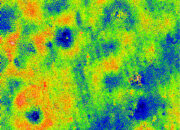In the realm of data storage, the evolution of technology has propelled the need for solutions that meet the insatiable demands of contemporary digital environments. Conventional forms of data storage, such as magnetic disks and solid-state drives, are increasingly seen as constrained by physical limitations, including capacity, speed, and longevity. The advent of fifth-dimensional (5D) data storage technology offers a paradigm shift, poised to revolutionize how data is stored and retrieved.
Fifth-dimensional data storage transcends traditional three-dimensional paradigms by incorporating time and additional information dimensions that significantly enhance data capacity and durability. This innovative approach utilizes materials such as quartz crystals and advanced nanostructures to encode vast amounts of data in a compact form. By leveraging photons for data manipulation, 5D storage systems can theoretically achieve a remarkable density of data storage—up to 500 terabytes in a single disc.
The principles behind 5D data storage hinge on several scientific advancements, including nanotechnology and laser writing techniques. Data is written in the form of dots within the crystal structure of the medium, with each dot representing bits stored in three-dimensional space. The fourth dimension relates to the data’s polarization, while the fifth encompasses temporal components, allowing for the representation of data without significant degradation over time. This feature is particularly advantageous for archival applications where data retention for centuries is desired.
Content types possible with 5D storage encompass an array of formats. The system can securely house extensive databases, cinematographic archives, high-resolution imaging data, and even complex computational models. By embedding data in crystals, it enhances not only the storage capacity but also markedly improves security against data corruption and unauthorized access. Such physical robustness ensures a longevity that transcends traditional media, making it suitable for critical applications, such as historical records, scientific research, and cultural preservation.
One of the most salient benefits of fifth-dimensional storage lies in its resilience to environmental factors. Unlike traditional electronic storage media, which can degrade due to electromagnetic interference or physical wear, 5D storage remains operable in extreme conditions. This resilience is paramount for sectors that require data reliability in unpredictable environments, including aerospace and marine explorations.
The transition to fifth-dimensional technologies necessitates a reconsideration of existing databases and data retrieval paradigms. The manner in which data is indexed and accessed will evolve accordingly. New algorithms will be required to facilitate efficient retrieval from crystal matrices, demanding a collaborative approach among computer science and physics to optimize data access speed and integrity. Such innovations may involve quantum computing strategies to enhance data manipulations at unprecedented speeds.
Beyond mere storage capabilities, the implications of fifth-dimensional data storage extend into realms of artificial intelligence (AI) and big data analytics. With the proliferation of data generated daily—whether from social media, IoT devices, or scientific research—the ability to quickly access massive stores of information efficiently is increasingly crucial. The compactness of 5D storage allows for entire databases to reside in localized settings, facilitating real-time processing and decision-making applications that depend on vast datasets.
These advancements inevitably invite scrutiny of the technological and ethical considerations surrounding such powerful data storage capabilities. Issues of data privacy, security measures, and ethical usage arise prominently. The capacity for preserving personal information indefinitely poses challenges, calling for robust legal frameworks that govern the ethical implications of data retention and accessibility. As authorities begin to grasp the potential ethical ramifications, an interdisciplinary approach will be needed to develop standards and guidelines surrounding this transformative technology.
Implementation of fifth-dimensional data storage will encounter hurdles, particularly concerning the commercial viability of the technology. Manufacturing processes will need to be refined to produce reliable and affordable 5D storage mediums at scale. Applications within financial sectors, healthcare, and government agencies could catalyze widescale adoption, especially for organizations that leverage large amounts of data. Partnerships between institutions and industry leaders may foster the rapid development of viable commercial solutions across diverse sectors.
As humanity moves toward an increasingly interconnected and data-centric future, the evolution of data storage continues to play a critical role in shaping technological landscapes. The introduction of 5D storage is not only a scientific achievement but also a potential game changer for data longevity and capacity. It represents a crossroad in data storage technologies, intertwining advancements in materials science, computing, information security, and ethical inquiry.
In closing, fifth-dimensional files encapsulate not just a shift in physical storage methodology, but an evolution of thought regarding data itself. As we prepare for an era characterized by heightened data demands and technological innovations, knowledge of these developments will be essential for all stakeholders invested in the digital future. The possibilities are vast, and the pathways forward are ripe for exploration, promising a future where data can be stored with unprecedented efficiency and integrity.









